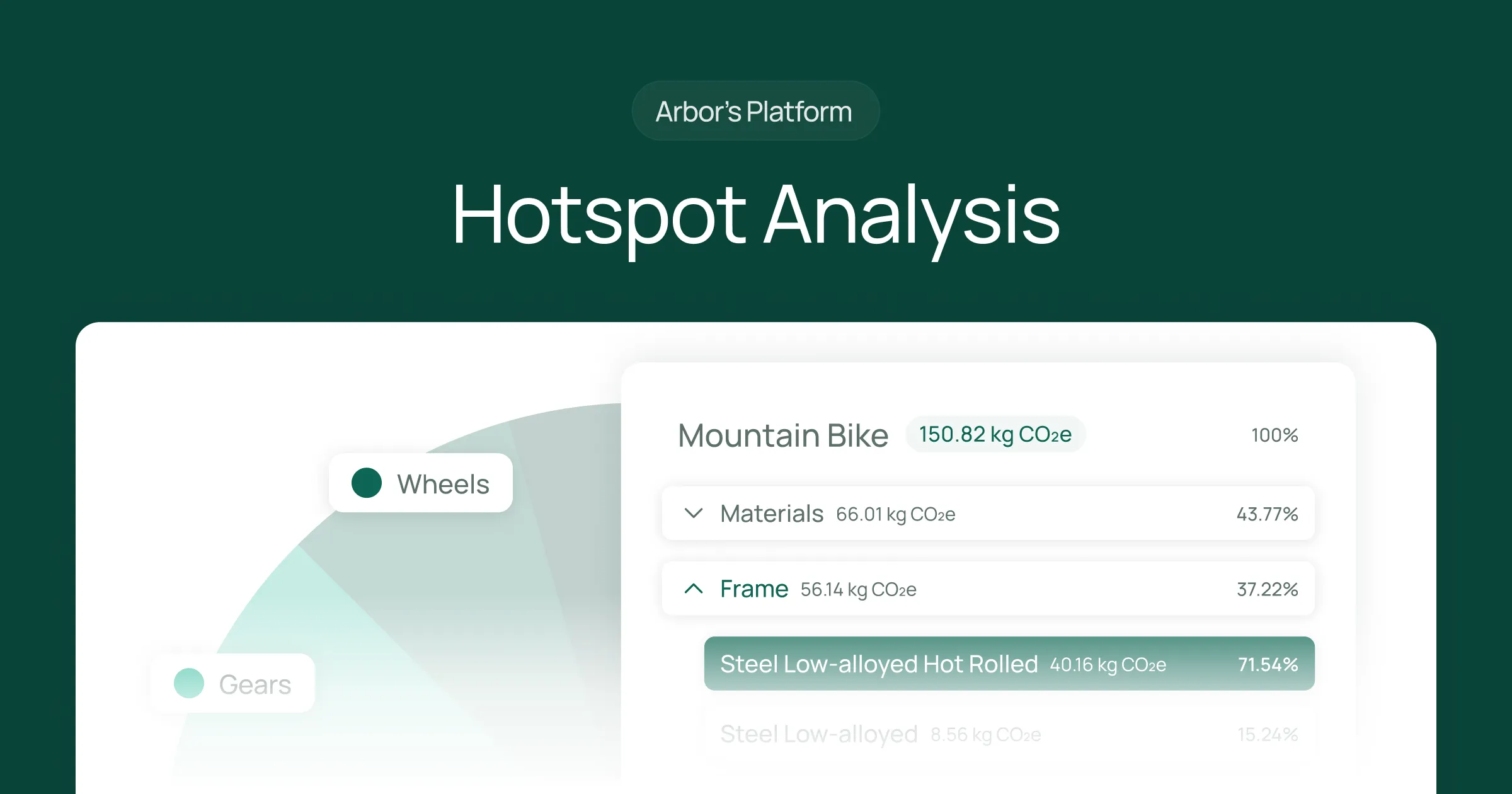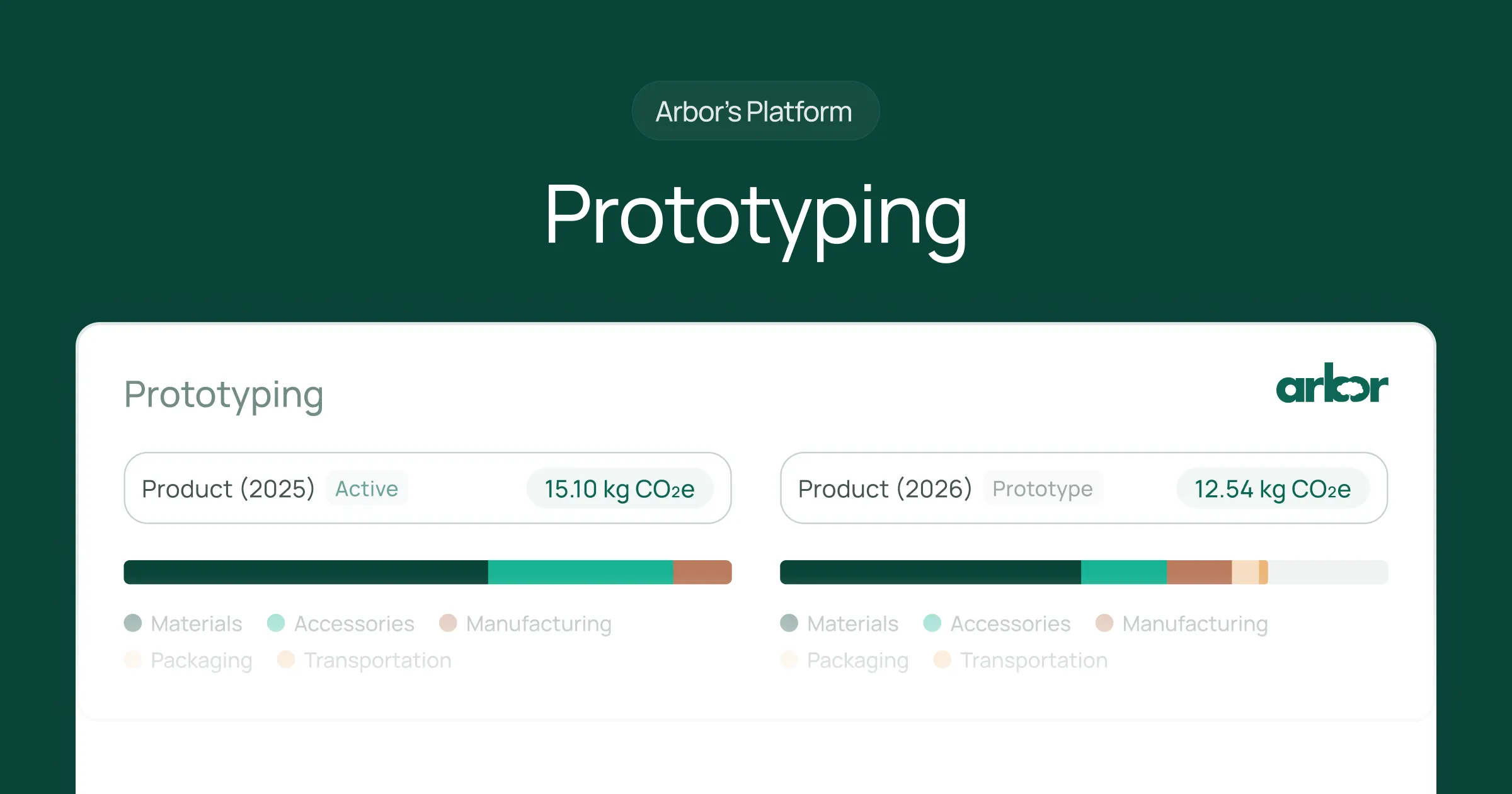See how Arbor’s methodology & compliance make us the leader in carbon emissions calculations.
Methodology
Greenhouse Gas (GHG) Protocol for Scope 1, 2 & 3
The GHG Protocol is a widely used international accounting tool that provides a comprehensive set of standards for measuring greenhouse gas (GHG) emissions. It categorizes emissions into three scopes: Scope 1 covers direct emissions from owned sources, Scope 2 accounts for indirect emissions from the generation of purchased energy, and Scope 3 includes all other indirect emissions that occur in a company’s value chain.

Product Environmental Footprint Category Rules (PEFCRs)
PEFCRs are technical guidelines developed for specific product categories within the EU's Environmental Footprint initiative. They guide companies on conducting a consistent and robust assessment of the environmental performance of products, covering a comprehensive set of impact categories such as climate change, resource use, and biodiversity.

EU’s Environmental Footprint (EF V3.0 no LT)
The EU's Environmental Footprint is a methodology for evaluating the environmental performance of products (PEF) and organizations (OEF) throughout their life cycles. Version 3.0 facilitates even more refined and accurate assessments by incorporating the latest technical developments in life cycle assessment practices.

Science Based Targets initiative (SBTI) for Emission Target Setting
The Science-Based Targets initiative (SBTi) guides companies in setting greenhouse gas emission reduction targets in line with what the latest climate science deems necessary to meet the goals of the Paris Agreement. It ensures that corporate actions align with the level of decarbonization required to limit global warming.

ISO Net Zero Guidelines (IWA 42:2022)
The ISO Net Zero Guidelines provide a framework for achieving net-zero greenhouse gas emissions, detailing principles and recommendations for quantifying, reducing, and offsetting GHG emissions. It is a tool to guide organizations towards effective climate action and sustainable business practices.

Compliance (Arbor’s certifications & standards)
GRI Certified Software Platform
Arbor is a GRI Certified Software Platform, ensuring that users can compile sustainability reports that adhere to the Global Reporting Initiative (GRI) standards, which are the most extensively used global standards for sustainability reporting by companies.

ISO Complaint (14040, 14044, 14064, 14067)
Arbor ensures compliance with various ISO standards: ISO 14040 and 14044 for life cycle assessment, ISO 14064 for greenhouse gas accounting and verification, and ISO 14067 for the carbon footprint of products. These standards help ensure the accuracy, transparency, and comparability of environmental data.

Partnership for Carbon Accounting Financials (PCAF)
PCAF is a global partnership of financial institutions that work together to develop and implement a harmonized approach to assess and disclose the greenhouse gas emissions associated with their loans and investments, enabling transparency and accountability regarding financial institutions' impact on the climate.

Carbon Border Adjustment Mechanism (CBAM)
CBAM is an environmental policy by the EU aimed at reducing the risk of carbon leakage by applying a carbon price on imports of certain goods from outside the EU. It ensures that ambitious climate action within the EU does not lead to 'carbon leakage' where companies transfer production to countries with less stringent emissions constraints.

How does Arbor do carbon emissions measurement for companies?

1. Arbor’s automated data ingestion collects your primary data
Primary data includes data such as operational energy usage, in-house production details, company-owned vehicle emissions, and direct corporate travel information, all vital for precise carbon footprint analysis.
2. Arbor fills your data gaps with secondary data & enriches it
Arbor’s proprietary secondary data includes an aggregate of trade flow data, LCA databases, energy grid data, transportation route data, region-specific material data, and more, ensuring a comprehensive emissions profile even where primary data might be unavailable.
3. Arbor’s platform calculates the carbon emissions
Depending on what you’re looking for, we can calculate product-specific emissions, encompassing direct and indirect emissions across all three scopes, as well as avoided emissions, to provide a clear view of your environmental impact and progress.
4. Use your carbon data
Generate detailed and reliable carbon reports for regulators or stakeholders, receive actionable tips for carbon footprint reduction, qualify for certifications, and even get a product environmental passport that showcases the sustainability of your product.
Why choose Arbor’s data for carbon emissions measurement?
Industry-leading Data Quality
At the heart of Arbor’s data-driven approach is our industry-leading data quality. We understand that accurate carbon management starts with precise data. Our meticulous data collection and validation processes ensure that you have access to the highest caliber of information, providing a solid foundation for your emissions measurement. By leveraging our data, companies can confidently make informed decisions on sustainability strategies that are both impactful and tailored to their specific needs.
Region-specific Data
Global enterprises require insights that resonate with their operations on a local scale. Arbor's data is not just comprehensive; it's customizable and region-specific. We incorporate local data sets, environmental regulations, and market dynamics to provide a granular view of your carbon footprint. This geographically targeted data allows for nuanced strategies that align with regional environmental goals and operational realities, ensuring that your sustainability efforts are as relevant in one region as they are in another.
Supplemental Secondary Data
In instances where primary data might be incomplete or unavailable, Arbor fills the gaps with an extensive collection of supplemental secondary data. Our vast repository includes trade flow data, reputable LCA databases, and region-specific material data, among others. This secondary data is enriched and integrated with your primary data to give you a fuller picture of your carbon emissions, ensuring no stone is left unturned in your sustainability journey.
Primary Data Integration
At the forefront of our methodology is the seamless integration of primary data. Arbor's sophisticated platform automates the ingestion of your operational data — from energy consumption to manufacturing outputs — ensuring that your carbon footprint is calculated with the utmost precision. This integration is critical, as it enables a tailored and transparent view of your emissions, laying the groundwork for effective reduction strategies that meet global standards and stakeholders' expectations.
Ready to calculate your company or products carbon impact?
Talk to Arbor's carbon experts to see how we can help conduct accurate and comprehensive carbon emissions measurements specific to your needs.
Measure your carbon emissions with Arbor
Simple, easy carbon accounting.




.webp)
%20Directive.webp)


.webp)











%20Arbor.avif)





%20Arbor.avif)


.avif)






%20Arbor%20Canada.avif)

.avif)
%20Arbor.avif)
.avif)






_.avif)
.avif)
%20Arbor.avif)




%20Software%20and%20Tools.avif)





.avif)
.avif)




%20EU%20Regulation.avif)











.avif)


%20Arbor.avif)









_%20_%20Carbon%20101.avif)







.avif)

.avif)
.avif)









